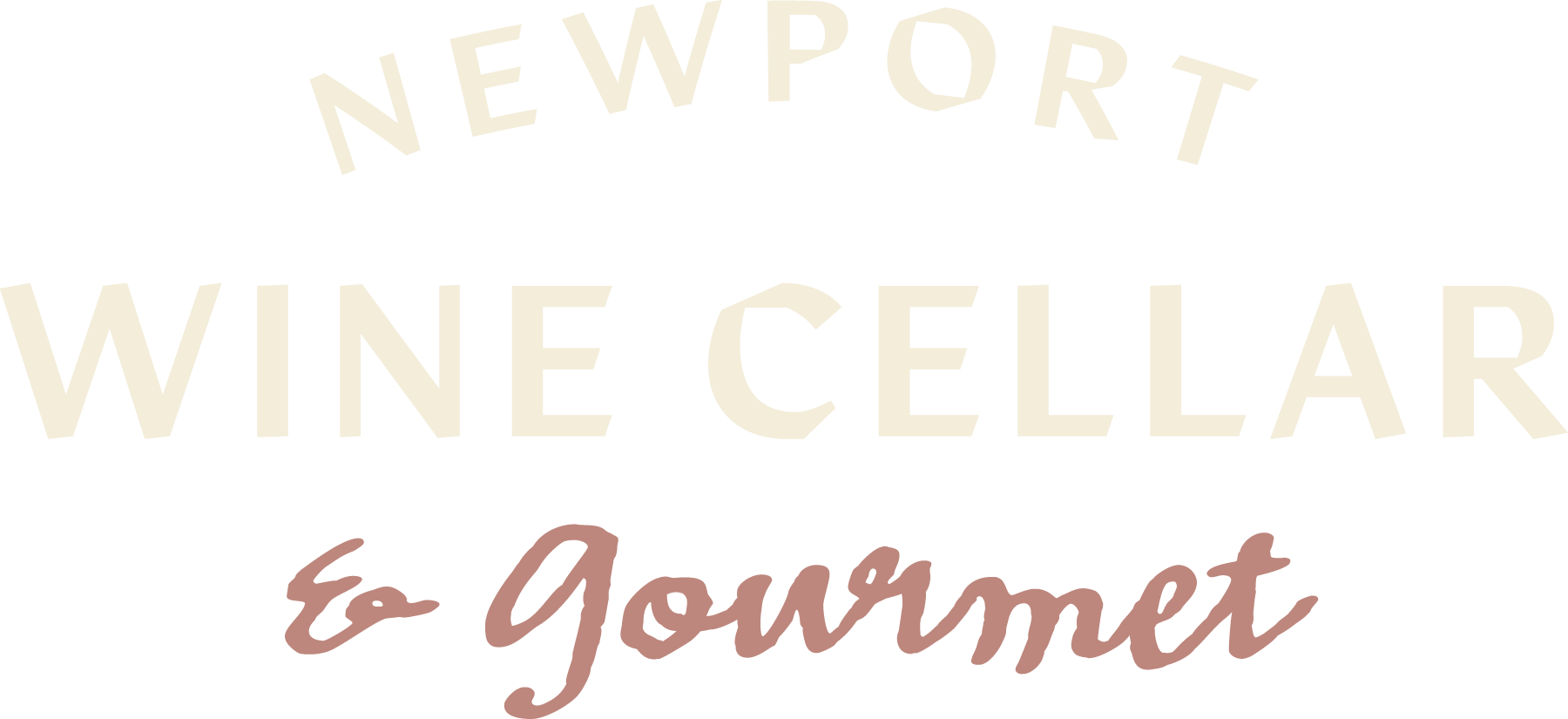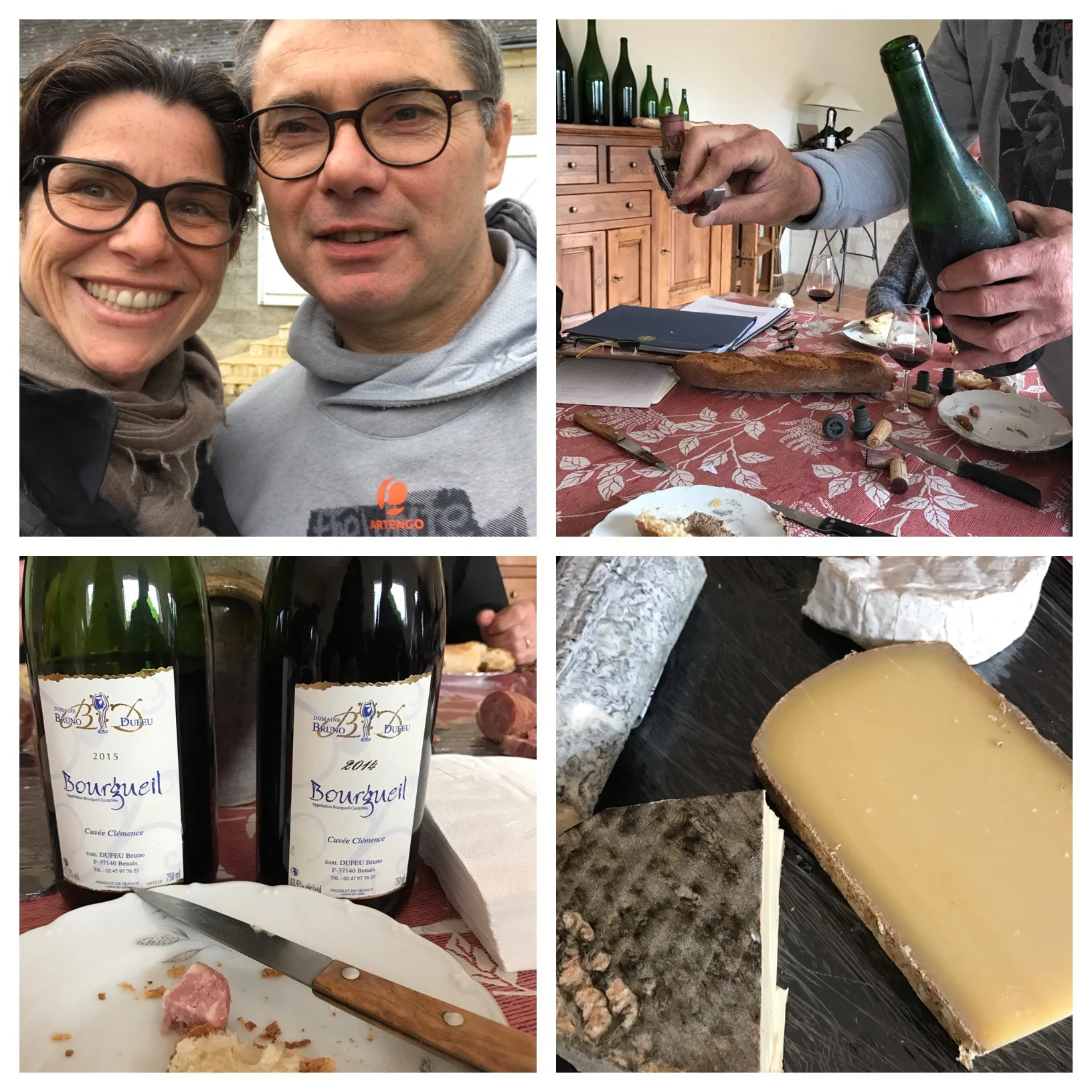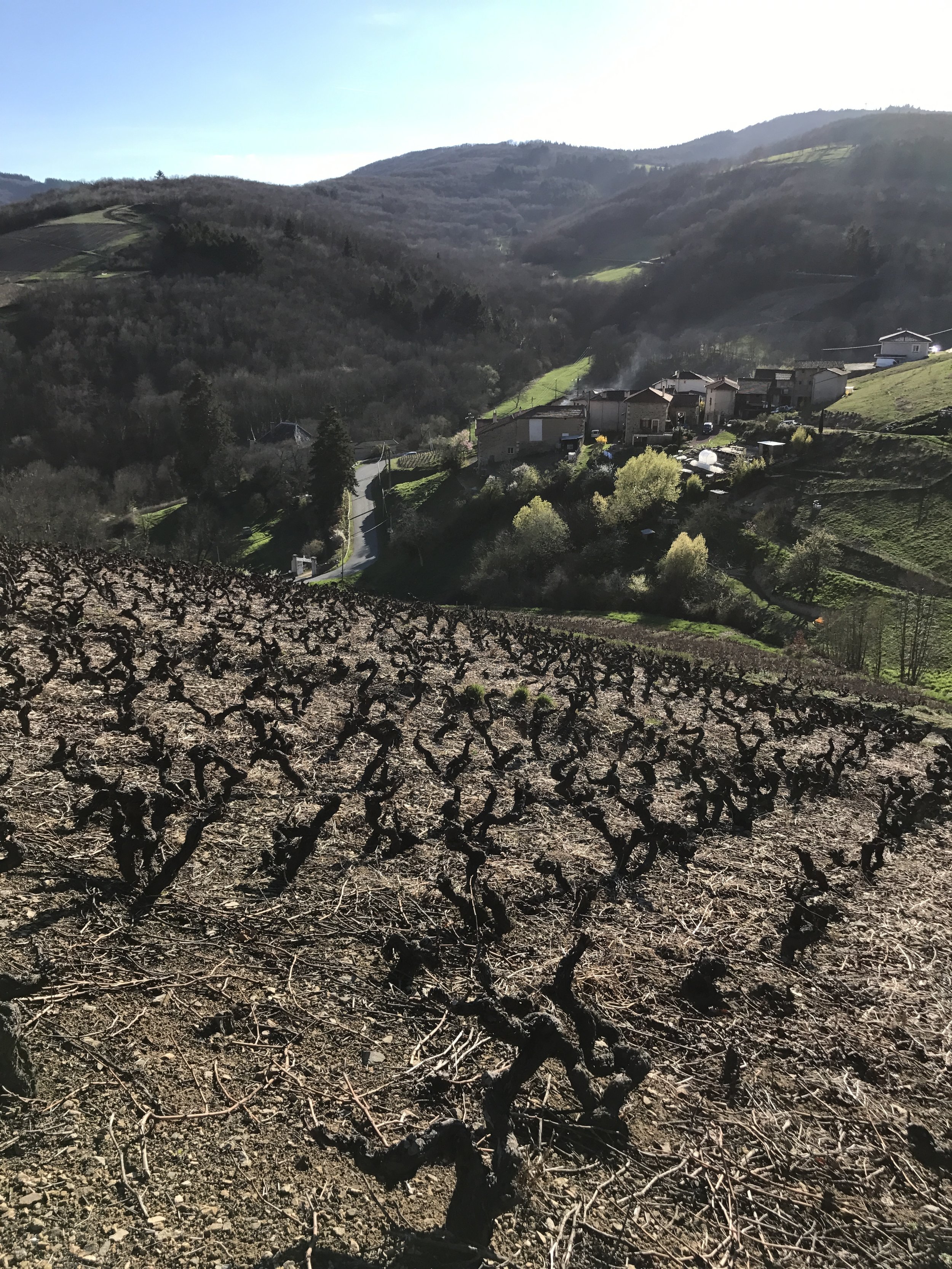a vist to the heart of the Loire, and two remarkable wine makers
This advice hangs above the old wine grotto in Bourguiel, just down the street from Bruno Dufeu's home and winery. It may seem ominous, but in truth it is rather inviting. Beyond the sign wine makers used to set up to taste and sell to the local people in the community, and Bruno recalls with much joy the days when the grotto was bustling. He admitted that they did not sell a lot of wine, but everyone loved it. Wine makers need little excuse to come together and drink wine.
Now the grotto is lush and green, overgrown with ivy, ferns, and vines hanging from a large tree that sits in the center of its inner courtyard; it is what, as a child, I imagined would lie just beyond the back of the wardrobe in my grandmother's attic. It is a magical place and I was enchanted, but it was Bruno's delicious wines that truly released my imagination.
Bruno Dufeu made his first wine in what was his father's vineyard in 1989, and we tasted that along with 1964, 2002, 2005, 2010...are you getting this? Seriously, it was a dreamy day, that began with a tour of his prized vineyard in Grand Mont, what is considered to be the very best wine producing land in Bourguiel because of its ideal location on the slope between forest and lower flat land and its unique soil. Bruno is converting to and cultivating all organic vines; despite the challenges and expense, he believes it is worth it. He grows exclusively Cabernet Franc, known locally as "Breton," grown in degraded sandstone soil that gives the wine is minerality.
The weather was a little challenging, but the lesson in terror was worth it! It is all about the place, the place, the place....
The appellation has about 100 winemakers, all working with Cabernet Franc, but Bruno was excited to tell us that they appellation just approved the introduction of Chenin Blanc. This may seem like a simple change to you or I, but here that kind of change takes the force of a hundred people, literally. He is eager to see what the wine will be like, and so am I. Learning about the history of these places is almost as fun as tasting the wine...well, almost.
After our journey in the grotto and the vineyard, as well as the underground caves that were created by house builders digging out stone for the spectacular sandstone homes of the region, we went to Bruno's tasting room to try some wine. He is a generous and happy person, who was pleased to welcome us to his home. He served us abundant cured meats and pates, cheeses, breads, and a regional fruit and wine tart, and he watched as we tasted his wines. I think most wine makers that I visit share an eagerness to know how someone responds to their wines; not surprising, I suppose, but the modesty is endearing. Bruno need not be modest, his Cab Franc is for me one of the best I have had, and this a favorite grape for me. It is powerful, with fruit intensity but not concentrated, it is dark to the eye, but reflects light that is inherent in its flavor and style, it is surprisingly fresh with just enough tannin to hold it together and give it structure that allows it to age. This is a wine that you can enjoy now, but would reward you if you can lay it dow for a few years.
I feel fortunate to have met with Bruno, and am compelled by his passion and commitment to wine making. He and his wife live a modest life, deriving joy from bring pleasure to our tables and our glasses.
From Bourguiel, we went to Vouvray. As many of you know, I adore Chenin Blanc, and often sing its praises with a particular bottle in hand. That bottle is Christophe Thorigny's Sparkling Chenin Blanc. His Chenin sings for me.
The appellation is not far from Tours, and the vineyards are planted on the right bank of the Loire River. To give you a sense of the historical and traditional nature of French appellations, these vineyards date back to 372. That is not a typo. The only sanctioned grape is Chenin Blanc, but what each wine maker does with that grape is unique; Chenin's range is like no other grape, from bone dry to dessert sweet, bubbles to still, and they are all lovely.
Christophe is a quiet man with a broad smile and eyes that suggest that he is very satisfied with his life. He answered our questions simply and directly, somewhat matter of fact, all of which gestured toward an unassuming confidence. He was pleased to share his wines, to tell us about his 10.5 hectares of vineyards in Parcay-Meslay, and to talk about his simple process of wine making: "latte raisonnée." For many European wine makers, the notion of organic is just obvious. He is the fourth generation to farm this land, he has to be responsible and sustainable, good to the earth, so it continues to produce good fruit for his wine. Additionally, respect the wine and the place, so don't intervene beyond what you have to in order to make wine. Minimal intervention is the goal of this and many wine makers here.
Hi wines are delicious, full stop. I can tell you about the lively fruit, so fresh and elegant, and about the supple texture on the palate, or the bracing acidity that makes your mouth water for food, and the compelling minerality that derives from the flinty clay soil cover; but I think you are better off visiting Babs this Saturday at the shop and taste it for yourself.
And, thank you for following along my journey with me. If you have any questions, send them along, I will do my best to get you an answer from the wine makers themselves! There is much more to come...
oui, I am smiling, too









